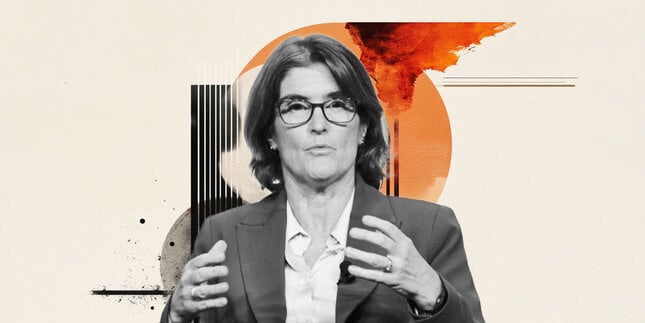- US Dollar is gaining strength after Fed decision volatility.
- New York Fed's Nowcast model predicts robust economic growth in third and fourth quarters.
- Fed expects financial conditions to remain loose, supporting the economy.
The US economy is experiencing a moderate slowdown, but indicators suggest that economic activity remains robust overall. The Federal Reserve (Fed) has indicated that the pace of its interest rate increases will be determined by economic data.
The upcoming US election will have wide ranging impacts across financial markets, but for now the US Dollar is holding its ground. However, dovish bets on the Fed remain steady and might limit the USD.
Daily digest market movers: US Dollar rises ahead of the weekend on market optimism
- Market optimism is driving the US Dollar higher ahead of the weekend.
- The market is expecting robust growth in Q3, with the New York Fed's Nowcast model tracking Q3 growth at 2.6% SAAR and Q4 growth at 2.2% SAAR.
- Fed is likely pleased that the market is helping to keep financial conditions loose, which should help the economy avoid a hard landing.
- Despite the Fed's efforts to push back against market easing expectations, they have intensified.
- After initially lowering its expectations following the decision, the market is now factoring in an additional 75 basis points of rate cuts by the end of the year.
- Even more unexpected is that the market anticipates close to 250 basis points of further cuts over the next year, which would bring the fed funds rate significantly below the neutral level.
DXY technical outlook: DXY bullish momentum waning, technicals remain bearish
The DXY index has gained some upside momentum, but technical indicators remain bearish.
The Relative Strength Index (RSI) is at 40, near oversold conditions, while the Moving Average Convergence Divergence (MACD) is printing decreasing green bars, implying weak buying pressure.
These indicators suggest that bears are in control and that the index is likely to continue its downtrend. Supports: 100.50, 100.30, and 100.00Resistances: 101.00, 101.30, and 101.60
Central banks FAQs
Central Banks have a key mandate which is making sure that there is price stability in a country or region. Economies are constantly facing inflation or deflation when prices for certain goods and services are fluctuating. Constant rising prices for the same goods means inflation, constant lowered prices for the same goods means deflation. It is the task of the central bank to keep the demand in line by tweaking its policy rate. For the biggest central banks like the US Federal Reserve (Fed), the European Central Bank (ECB) or the Bank of England (BoE), the mandate is to keep inflation close to 2%.
A central bank has one important tool at its disposal to get inflation higher or lower, and that is by tweaking its benchmark policy rate, commonly known as interest rate. On pre-communicated moments, the central bank will issue a statement with its policy rate and provide additional reasoning on why it is either remaining or changing (cutting or hiking) it. Local banks will adjust their savings and lending rates accordingly, which in turn will make it either harder or easier for people to earn on their savings or for companies to take out loans and make investments in their businesses. When the central bank hikes interest rates substantially, this is called monetary tightening. When it is cutting its benchmark rate, it is called monetary easing.
A central bank is often politically independent. Members of the central bank policy board are passing through a series of panels and hearings before being appointed to a policy board seat. Each member in that board often has a certain conviction on how the central bank should control inflation and the subsequent monetary policy. Members that want a very loose monetary policy, with low rates and cheap lending, to boost the economy substantially while being content to see inflation slightly above 2%, are called ‘doves’. Members that rather want to see higher rates to reward savings and want to keep a lit on inflation at all time are called ‘hawks’ and will not rest until inflation is at or just below 2%.
Normally, there is a chairman or president who leads each meeting, needs to create a consensus between the hawks or doves and has his or her final say when it would come down to a vote split to avoid a 50-50 tie on whether the current policy should be adjusted. The chairman will deliver speeches which often can be followed live, where the current monetary stance and outlook is being communicated. A central bank will try to push forward its monetary policy without triggering violent swings in rates, equities, or its currency. All members of the central bank will channel their stance toward the markets in advance of a policy meeting event. A few days before a policy meeting takes place until the new policy has been communicated, members are forbidden to talk publicly. This is called the blackout period.
Information on these pages contains forward-looking statements that involve risks and uncertainties. Markets and instruments profiled on this page are for informational purposes only and should not in any way come across as a recommendation to buy or sell in these assets. You should do your own thorough research before making any investment decisions. FXStreet does not in any way guarantee that this information is free from mistakes, errors, or material misstatements. It also does not guarantee that this information is of a timely nature. Investing in Open Markets involves a great deal of risk, including the loss of all or a portion of your investment, as well as emotional distress. All risks, losses and costs associated with investing, including total loss of principal, are your responsibility. The views and opinions expressed in this article are those of the authors and do not necessarily reflect the official policy or position of FXStreet nor its advertisers. The author will not be held responsible for information that is found at the end of links posted on this page.
If not otherwise explicitly mentioned in the body of the article, at the time of writing, the author has no position in any stock mentioned in this article and no business relationship with any company mentioned. The author has not received compensation for writing this article, other than from FXStreet.
FXStreet and the author do not provide personalized recommendations. The author makes no representations as to the accuracy, completeness, or suitability of this information. FXStreet and the author will not be liable for any errors, omissions or any losses, injuries or damages arising from this information and its display or use. Errors and omissions excepted.
The author and FXStreet are not registered investment advisors and nothing in this article is intended to be investment advice.
Recommended content
Editors’ Picks

NZD/USD turns positive above 0.5700 after RBNZ Orr's presser
NZD/USD returns to the green above 0.5700 early Wednesday. The RBNZ's expected 50 bps interest rate cut to 3.75% in February and signals on future rate cuts weighed on the Kiwi before the pair rebounded on Governor Orr's press conference.

AUD/USD keeps range near 0.6350, Fed Minutes eyed
AUD/USD trades in a range around mid-0.6300s early Wednesday. The cautious market mood, the RBNZ dovish rate cut and Trump's tariff threat-led US Dollar upside remain a drag on the Aussie. Focus shifts to the Fed Minutes amid trade war fears.

Gold price remains close to record high near $2,940 amid trade tensions
Gold price treads water near $2,940 in the Asian session on Wednesday, remaining near the record high as worries that Trump's reciprocal tariffs could trigger a global trade war continue to act as a tailwind for the safe-haven bullion. Fed Minutes is next on tap.

Bitcoin stretches losses as CME premiums dip, Strategy aims to purchase $2 billion worth of BTC
Bitcoin continued its downward trend on Tuesday as K33 Research's weekly report indicated growing declines in BTC CME premium and yields. Meanwhile, Strategy announced plans to issue $2 billion worth of senior convertible notes.

Rates down under
Today all Australian eyes were on the Reserve Bank of Australia, and rates were cut as expected. RBA Michele Bullock said higher interest rates had been working as expected, slowing economic activity and curbing inflation, but warned that Tuesday’s first rate cut since 2020 was not the start of a series of reductions.

The Best Brokers of the Year
SPONSORED Explore top-quality choices worldwide and locally. Compare key features like spreads, leverage, and platforms. Find the right broker for your needs, whether trading CFDs, Forex pairs like EUR/USD, or commodities like Gold.